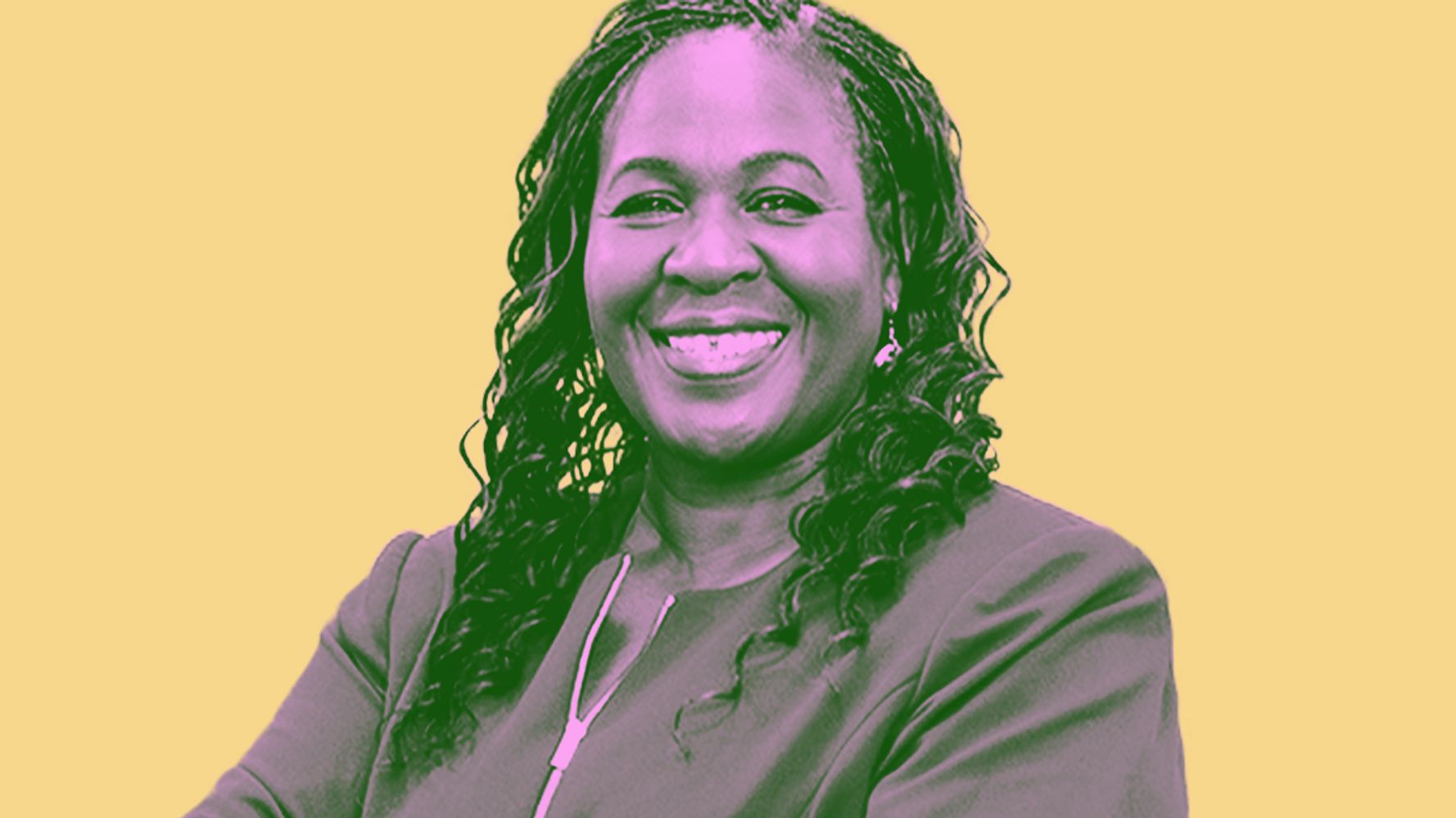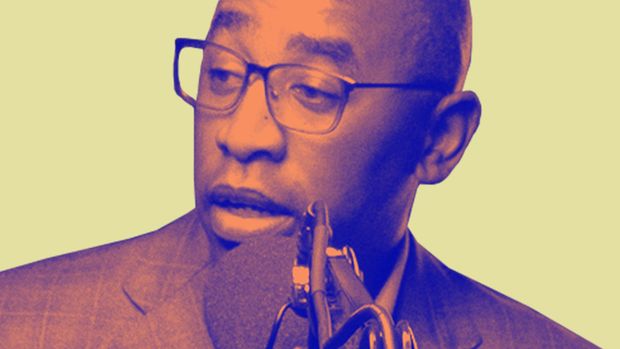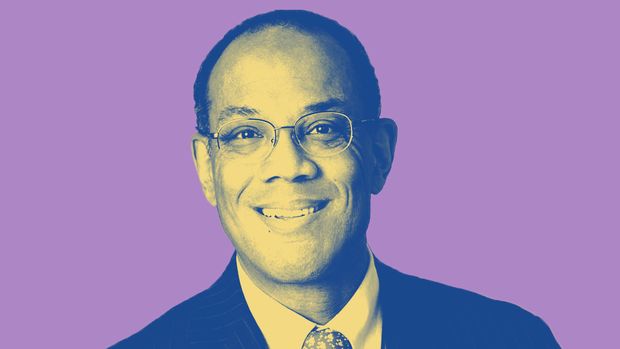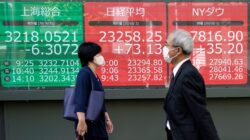[ad_1]
Conversations around diversity and inclusion can be uncomfortable — particularly in the workplace. In this new podcast, host Y-Vonne Hutchinson — CEO and founder of ReadySet, a diversity and inclusion consulting and strategy firm — speaks with business leaders who are driving discussions within their organizations and taking bold action to advance and accelerate change.
Working with CEO Action for Diversity and Inclusion — the largest coalition of CEOs who’ve pledged to advance diversity and inclusion in the workplace — Hutchinson discusses topics such as allyship, intersectional divides and mental health inclusion with C-suite leaders who are showing their organizations and their industries that now is the time to act on diversity and inclusion.
Transcript below:
Woman on Street #1: Diversity and inclusion is one thing, and then we bring in that third piece of that, which is belonging. And if you really want to see an organization thrive, talk about belonging.
Woman on Street #2: True inclusion and true diversity is about having people from all walks of life being able to come into a workplace and really feel comfortable about being their true selves.
Y-Vonne Hutchinson, Host: This is “Time To Act.” I’m your host, Y-Vonne Hutchinson. I’m a diversity and inclusion expert, and through my company ReadySet, I work with organizations to help them foster a corporate culture that helps provide a sense of belonging for employees.
On this podcast, I’m working with CEO Action for Diversity and Inclusion, the largest coalition of CEOs who have pledged to advance diversity and inclusion in the workplace. Throughout the series, we’ll explore and highlight the recent steps companies are taking to tackle D&I, and I’ll be talking to leaders of industry and diving into why they act as ambassadors for change.
Joining me today is Carin Taylor. She’s the chief diversity officer of Workday, a cloud-based financial and human resources management platform. Carin and I spoke about how creating a culture of belonging often means looking in the mirror first to check our own biases.
Thank you so much for joining me today, Carin. I’m super excited to talk about you and hear about your experience at Workday.
Carin Taylor, Workday chief diversity officer: Thank you. Super excited to be here, Y-Vonne.
Hutchinson: So, I’m wondering if we could just start by you sharing a little bit about your background. So, your career spans 25 years in D&I, which is amazing. And I would love to hear a little bit about your journey.
Taylor: Absolutely. So, it’s interesting because, you know, growing up I always knew I was different. I grew up as the only girl in my family with three brothers and so from a gender perspective I was different. My family always called me “chocolate” because of, you know, the darkness of my skin, and so I also knew that my skin tone was different.
So being different was always a part of my life, but I’ll be honest with you, it wasn’t until I traveled around Asia that I realized that other people also looked at me as being different. And so, when I had the opportunity to move into diversity, I knew I had a strong passion for the work, but I didn’t quite understand why.
And so, when I had the opportunity to first move into diversity, I kind of questioned, you know, whether or not this was the right work for me. I was always assuming that it was because of the fact that I was African American that people really wanted me to jump into this space and I had my own issues and was really opposed to doing that. After I, kind of, did some self work, I realized that this was a space that I really wanted to be in, a space that I really wanted to learn in and so I decided that I would jump into it.
I originally started out doing work around employee resource groups and then basically just grew my career from there. And so, I have been doing it what feels like a very long time, but certainly feels like things have evolved, even though we’re still dealing with many of the challenges that we’re dealing with today.
Hutchinson: Can you tell me a little bit more about that evolution?
Taylor: Yeah. I mean, when I first started doing this work it really was only about diversity, and really it was gender diversity, right? How do we get more women into leadership? How do we bring more women into our companies? And then, over time, it started to evolve to this notion of inclusion and more demographics, right? We started being hyper-focused on Black and brown people, people who were LGBTQ, people with disabilities and veterans. And so, we saw this notion of expanding what we were thinking about from a diversity standpoint, but then we also started talking about inclusion and what that meant.
And now today, we’ve evolved to this time where we’re talking about belonging, right, and having to get this new terminology and this new understanding of what it means to impact your employees, and just us in the world, from an engagement and an inclusion and a belonging standpoint. So, it definitely has evolved from just the diversity, to now to this whole wide thing around inclusion, belonging, equity for all, which is definitely a change.
Hutchinson: I’m curious, this question might seem like it’s out of left field, but I get it all the time and I would love to hear your answer, which is, how do I prepare for a career in D&I? I would love to hear your answer to that question just knowing your journey and kind of what you said struck me about you had to really think about if that was the path you wanted to take.
Taylor: I would say, I don’t know if anyone’s ever prepared to go into D&I, especially as I think about where we’re at in the world today. This is really, really hard work. But I would say for people who are getting into this space, find your passion around why you want to do this work. Why is it important to you, as an individual, and what are the impacts that you want to make? Be clear about that.
And then I would also say, find your own voice in this work. I talk about diversity and I talk about “VIBE” for all: value, inclusion, belonging and equity for all. And that “for all” piece to me is really important because I can’t do this work and only do it for women or people of color. I have to include everyone, including straight white men, in the context of what we’re trying to solve for and what we’re trying to do. So, I would just say that as you’re stepping into this work, find the “why” for yourself so that you can always ground yourself back in whatever that thing is for you, to be able to constantly come back to, in terms of how you think about this work.
Hutchinson: And can you give me some examples of how you go about doing that, how you bring everyone along?
Taylor: Yeah, I would say one of the things that’s most critical is being authentic in who you are and sharing some of your own vulnerability. So I’ll share a story with you, and it has to do with bias. So, as I was learning about who I was as an individual, I was at a sales meeting one time and, you know, 150, 200 people in the room — I was one of about 10 women, one of two African Americans and the only African American woman in the room — and the topic of conversation that day happened to be diversity. And there was a typical-looking white executive in front of the room talking about diversity. And I sat there having a really visceral reaction to looking at this person, right, this white guy talking to me about diversity.
And so I went up to him during the break and I said, “Look,” I said, “I really can’t receive your message.” And he said, “Why not?” And I said, “Because of what you look like.” And he said, “I’m gay.” And it was the first time that unconscious bias really hit me upside the head, but it wasn’t until I got home later that evening and realized the lesson that I had learned that day. And that was, as I sat there about to have dinner, I realized that what happened in that interaction had been happening to me my entire life. People had been judging me simply by what I look like, and I, in turn, had started to do it to other people.
And so being able to share stories like that allow this sense of vulnerability and authenticity that then allow other people to step into this conversation differently.
Hutchinson: For me, Carin’s story really demonstrates her commitment to seeing change as a natural extension of her own actions. As a Black woman, she faces some of the most acute discrimination in the country, yet she’s taken it upon herself to recognize the ways in which she uses that same bias against others.
And I’m curious, kind of, to go back to your own journey. You’re a Black woman, I’m sure that affects the way that you engage with this work, the intersectional marginalizations that you faced. I’m wondering, how do you think about intersectionality as you’re doing this work?
Taylor: It’s a great question. So, what I’ve realized is that over the years, it isn’t just one dimension of diversity that makes me who I am. It’s all of those dimensions; It’s my race. It’s my gender. It’s my sexuality. And so I think that those intersectionalities of what makes me me, and the experiences that I’ve had, allows me to shape my thoughts and my experiences and how I approach solving problems or coming up with solutions different than the person who’s sitting next to me. I don’t step in and separate Black Carin from female Carin from lesbian Carin, in terms of how I step into the world. All of those things make me who I am and shaped the way I see the world, and I have to leverage those things as I am learning, growing, teaching, educating in this space.
Hutchinson: I want to talk about the moment that we’re in now, because I think now is an amazing time to be a DEI leader. I can’t think of another time where the conversation, the zeitgeist, has been so attuned to the work that we’re doing. And so I’m wondering, thinking about the social unrest, the social justice movements we’re seeing, the racial justice movements that we’re seeing — also thinking about this is happening against the background of COVID — and I’m wondering, how are you seeing this moment? What have you been learning in this moment?
Taylor: This is probably one of the most fascinating times in my entire life, and we’re in an election year this year as well, right? And so you have all of these complications of things that we have, I think, in most cases, have never experienced this much change in our entire lives. And I know from the seat that I sit in, it is exciting because I do feel like there’s this renewed energy around wanting to address the inequalities that we’re currently dealing with, and I think that that is powerful.
I think what’s also happening, though, is people are feeling much more emboldened about not wanting to jump on the cause of what we’re trying to do here, as well. And I think that, you know, especially as we think about us as an entire society, we know that there are people who do not subscribe to equality, and who do not want things to change, and that’s hard.
I also think about the fact that, as being a Black CDO right now, I really believe that we are one of the most challenged people in the entire world at the moment and I certainly feel a lot of the stress and a lot of the pressure. As I think about my role today, as a chief diversity officer and as a Black chief diversity officer, it’s interesting because, you know, in some cases, you know, your minority employees may have this feeling of, “You’re not acting fast enough. Change is not happening fast enough.“
On the other hand, you may have white employees who may think that you have a hidden agenda, because you want to push the Black agenda, because you’re Black. Your global employees may feel that your initiatives are only focused within the U.S. And so the complexity of all of that and trying to solve for all of that means that there is a lot to balance.
Hutchinson: Hmm. I feel like you just so beautifully named all of the tensions that happen, particularly if you’re a Black DEI professional in this moment. And I want to follow up on that a little bit and ask, in this work, I think we’re best when we bring our identities and our stories and our unique perspectives, but at the same time, we’re bringing all of that to work, right? And I’m wondering, as a Black lesbian woman doing this work, who is leveraging her experience, but at the same time dealing with the emotional fallout of doing that in this moment, how do you think about the relationship between the personal and the professional?
Taylor: Well, right now, I would love to say that I can separate them, but frankly I can’t. And as I think about the intersections of who I am as a person also, and I think about the social influences that are impacting my life today, they are impacting me as Carin Taylor. They are impacting me as Carin Taylor, CDO. They are impacting me as Carin Taylor, Black executive in a company. All of these things, I can’t peel apart all of these things from how I step into this professionally and personally.
And I’ll tell you, sometimes it’s hard, especially if I think about the day after the George Floyd incident. I walked into the workplace with such a heavy heart. I couldn’t separate my role as an executive and as a CDO from who I was as an African American woman. And when I was standing up in front of my company at a town hall, my tears, they just had to flow because I couldn’t separate the two. And so, I think that that’s how many of us are walking into the workplace every single day, having to deal with the complexity of who I am as an individual, who I am as a Black individual and who I am as a part of the company that I work for. And it has been one of the most emotionally challenging and charged times in my life. And so, I don’t even know how to explain how I can separate the two. All I can say is, I can’t.
Hutchinson: I want to turn now, I think, to what Workday is doing. I think Workday, like many companies, has its own challenges. And recently, I think Workday reported that the Black employees there make up less than 3% of the global workforce. So as Workday is thinking about its commitment to community, how are you building off your guiding principles for belonging and inclusion to increase diversity? What are some of the initiatives that you all have going? How are you thinking about the path ahead?
Taylor: The first thing that we’ve done is we’ve taken some quick action, right? So we have committed to allocating $10 million to social justice causes, which is phenomenal. We’re leveraging our Black employee resource group, called The Talented 10th, to help us determine how we’re going to actually spend those funds. We have put together very quickly what we’re calling an accelerator team, which is about 20 people that have come together for 12 months, from all over the business, right? They’ve come from sales, from services, from product, from human resources, to come together to form this team to help accelerate our belonging and diversity efforts specifically targeted on our Black and Latinx employees.
And we’re also placing an additional $45 million focus in this area to do better. Part of that also includes how we’re going to increase representation of our Black and brown communities. We decided to have some specific goals around this. So, increasing representation of our Black and brown communities by 30% and doubling our leadership by 2023 for both of these communities, as well. And so, we’re really putting some intentional efforts around how we’re going to go about this, how we’re going to continue to develop these employees and create opportunities for them to feel like they belong more, like they’re connected to our purpose and like they have opportunities to advance.
Hutchinson: Something that really sticks with me is the sentiment that Workday plays an active role in pushing forward data-driven solutions. And they do so through bold decision-making.
I’m curious if we can just nerd out for a second, because I love data. At ReadySet said we love data. We love data tools. We love working with them. And so I’m curious, when you think about metrics and measurement, how are you approaching that question at Workday? How are you thinking about measuring, belonging, inclusion, diversity? Can we just nerd out over that for a second?
Taylor: Let’s definitely nerd out because data is one of those areas that I’m super passionate about, because it drives just about everything that we do, right? Not just the data, but the stories that come along with the data, as well.
But let me share a couple of things that we’re doing, from a data perspective, in terms of how we’re measuring belonging. One of the things that you may have read about recently, because we just announced this, is two new product enhancements that we’re going to be focused on.
One is called VIBE Central, which brings diversity and inclusion-related data into one central place within our HCM tool and really gives you a snapshot for workforce diversity and representation. The other thing — and this is the one that I think is going to be even more powerful, and this will be available next year — it’s called a VIBE Index. And the VIBE Index will enable organizations to equally measure and compare belonging, equity, diversity and inclusion, to get a better understanding of where parity may be lacking within the organization to allow you to actually focus on how you improve your efforts.
And so, being able to leverage this data, along with the stories, is going to enable companies to really think about how they can do diversity and inclusion better. This will be a powerful tool, both of these will be powerful tools, but specifically the VIBE Index is really leading edge in terms of how we’ve been able to measure diversity and inclusion.
As you know, Y-Vonne, sometimes people measure inclusion, sometimes they measure diversity. But bringing them all together under one umbrella through this VIBE Index, we think is just going to be a powerful way for both Workday and our customers to be able to enhance the experience of our employees from a B-and-B perspective.
Hutchinson: That’s great advice. All right and we’re almost at time so I just have one last question for you. For those folks thinking about using your product or who’ve listened to this podcast and they really want to push to accelerate progress within their own companies, what advice would you give them?
Taylor: I would say, start somewhere. Start somewhere. Start by having a discussion. Start by uncovering what some of your challenges are. Think about how data and insights are going to help you to improve as an organization and think about how you go from just caring that inequities happen, to taking action around addressing these inequities.
And for me, as I think about the difference between sympathy and empathy, sympathy really is, “Oh wow, I really feel for the experience that you’re having,” where empathy takes it that next step, where you want to not just feel for the experience but you want to make sure that you are taking action to improve the experience. And so, I would say continue pushing forward. Continue pushing through the hard questions. Ask and answer the hard questions, right? You can ask them and if they go unanswered, you’re never going to uncover the importance of really what’s happening underneath the sheets. And so, I would say, ask and answer the hard questions as well, and think about the fact that it’s going to take all of us, all of your employees, all of us around the entire world, to continue to pushing forward and making progress. And so, that notion of “for all,” and that notion of “togetherness,” is how we’re going to continue to make progress.
Hutchinson: Awesome. Thank you so much for taking the time to talk with me today. It’s been a pleasure. I loved hearing about your journey and I’m excited to see what’s next from Workday.
Taylor: It is definitely my pleasure to have been here today. And thank you so much. I really enjoyed this conversation.
Hutchinson: I really loved the call-out to learning the idea that diversity, equity and inclusion is not a destination, but it’s a journey. And I think now, that emphasis is more important than ever because just look at the conversation that is going on around us. The conversation about Black Lives Matter, racial justice, a global pandemic. The conversation amongst so many lines has moved so fast that if you’re not learning while you’re practicing, you’re going to get left behind.
And I also love that we got the chance to talk about the external piece, the tools that you use to do this work. Not just about how you approach it as a practitioner, but then thinking about what do I use to do it well? I think the emphasis on data was so important there, because, you know, we didn’t just talk about how to collect data and just sit with it and, you know, that’s the end of it, but we talked about how to leverage it. Because, I think that there’s a trap, so often, we collect the data and we think by collecting the data and presenting the data, we’ve done the work. And that’s only the beginning of the journey, right? So we collect the data. We present the data. But then we need to leverage it and figure out what we want to do, based on what we’ve learned.
So what did you learn today from Carin Taylor about identifying your own biases? Let us know in the comments section, we want to hear from you. We also want to know what you think about the show, so leave us a review. Subscribe to “Time to Act” for free on Apple podcasts or wherever you get your podcast. You won’t want to miss upcoming conversations with groundbreakers who are leading the charge to improve diversity and inclusion in their companies and industries. I’m Y-Vonne Hutchinson. Let’s keep the conversation going.
To hear or read more episodes of “Time To Act,” click here:
“Time To Act: A Podcast About Diversity And Inclusion,” presented by PwC and CEO Action for Diversity & Inclusion™, features CEOs and C-suite leaders from multinational brands and regional businesses discussing why diversity and inclusion are defining factors in a company’s growth and success at scale. It’s more than checking the boxes — together, business leaders are listening, understanding and taking action for real change.
With more than 1,000 CEOs that have taken the pledge, CEO Action is the largest CEO-led business coalition focused on advancing diversity and inclusion in the U.S. To learn more, visit CEOAction.
Produced by RYOT Studio and At Will Media. For a deeper dive into corporate diversity and inclusion in action, visit HuffPost.
More episodes from “Time To Act”:
[ad_2]
Source





